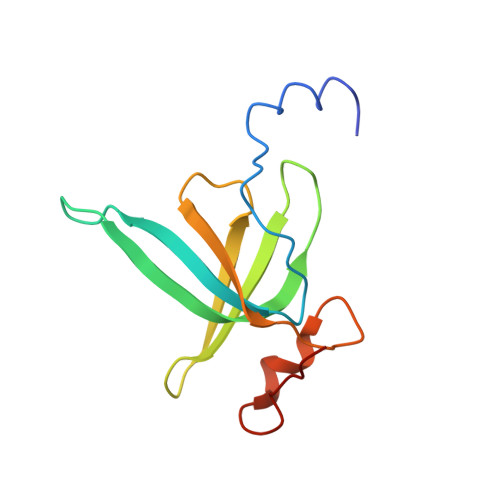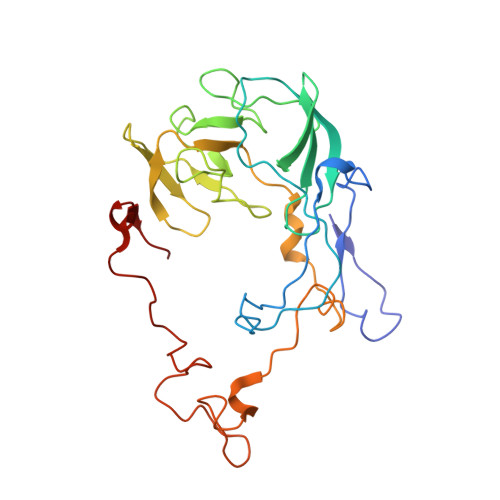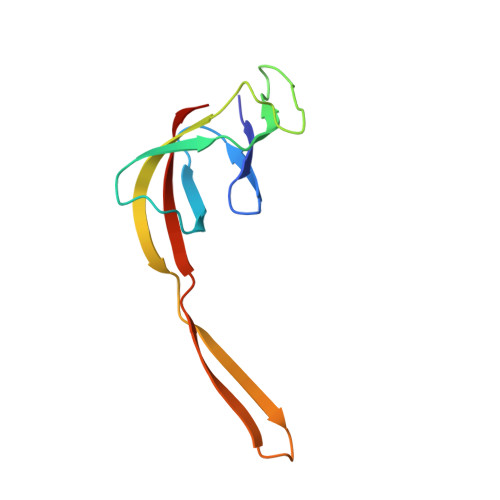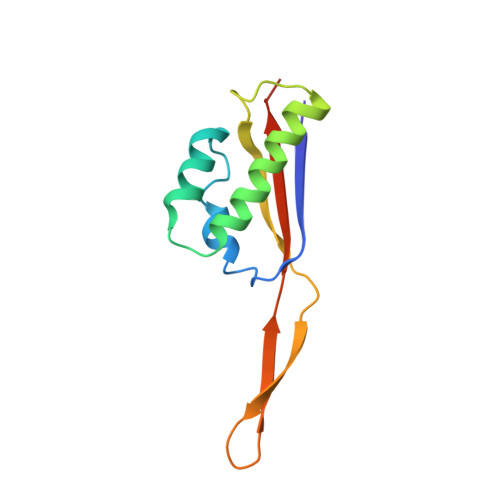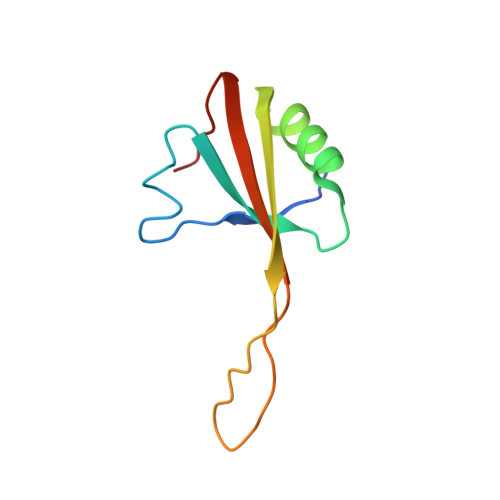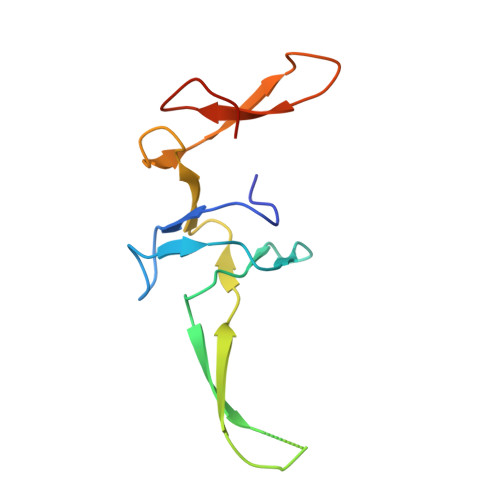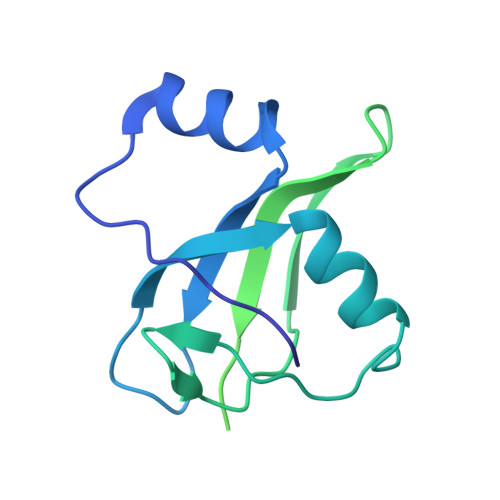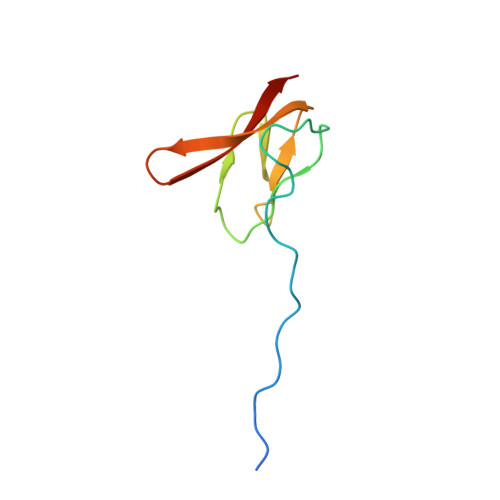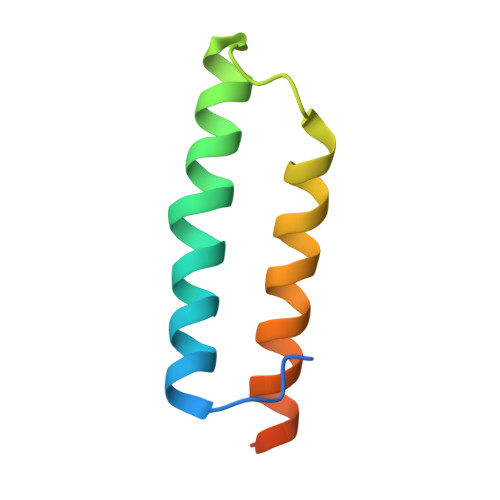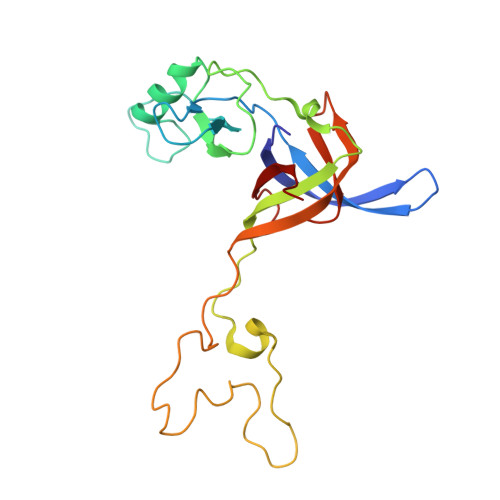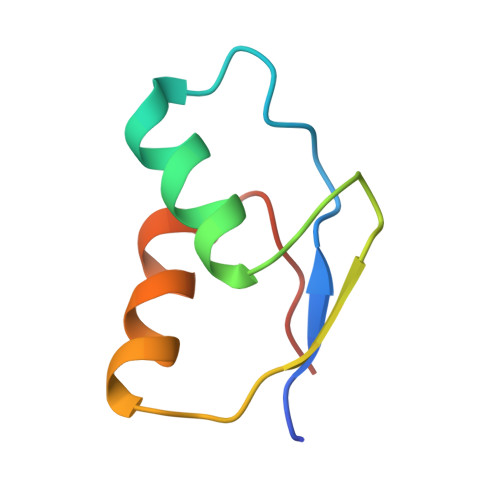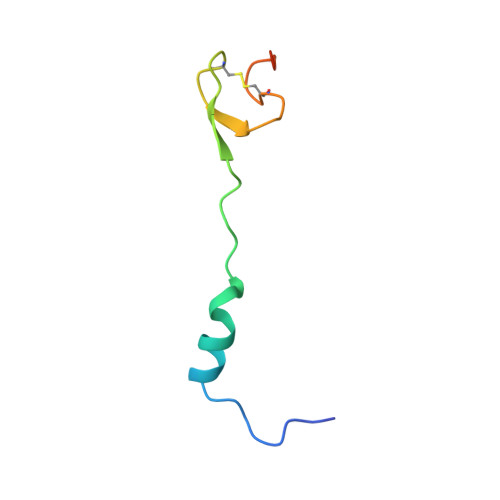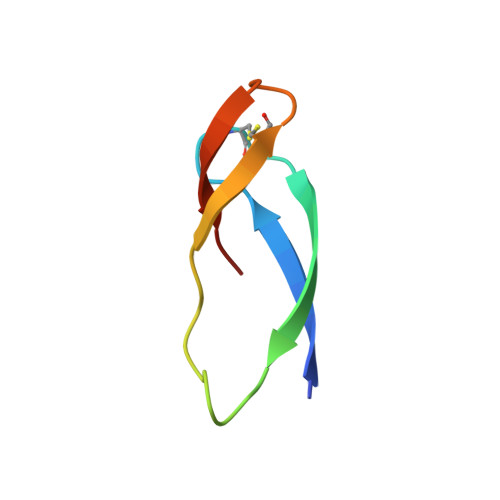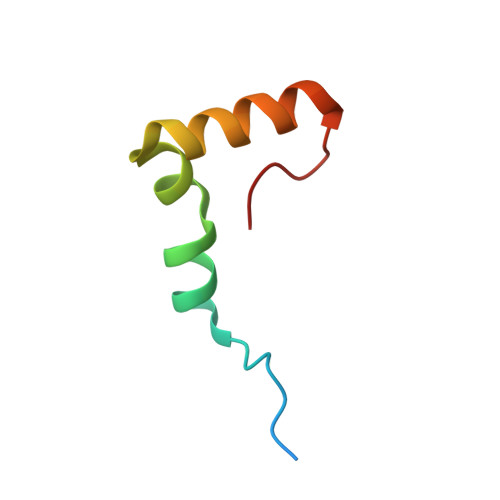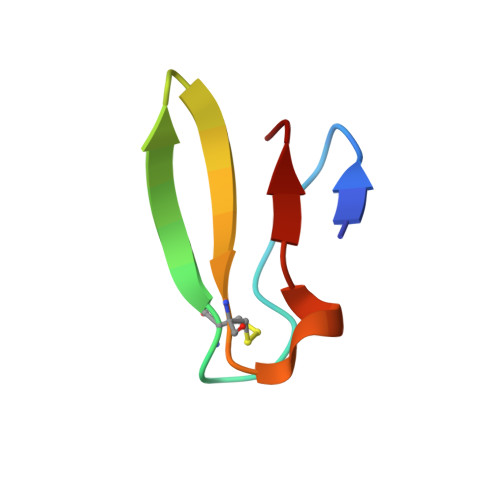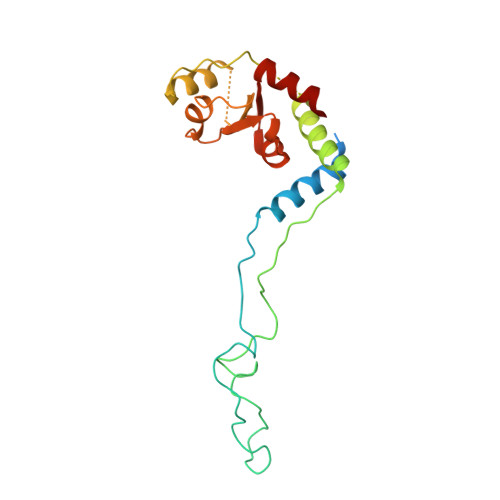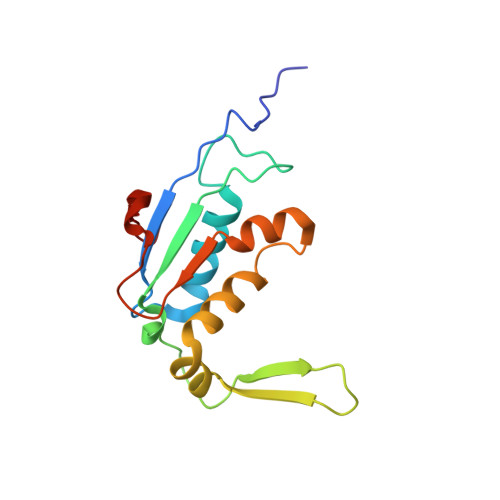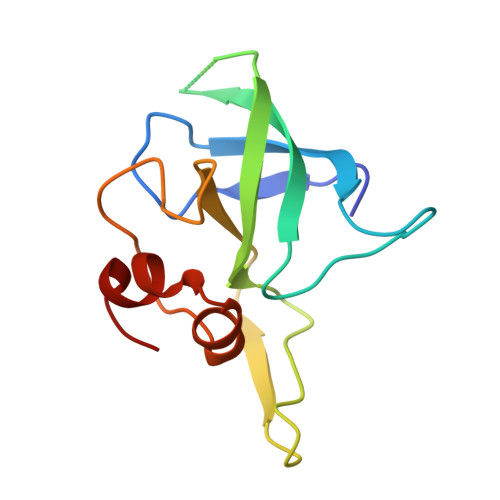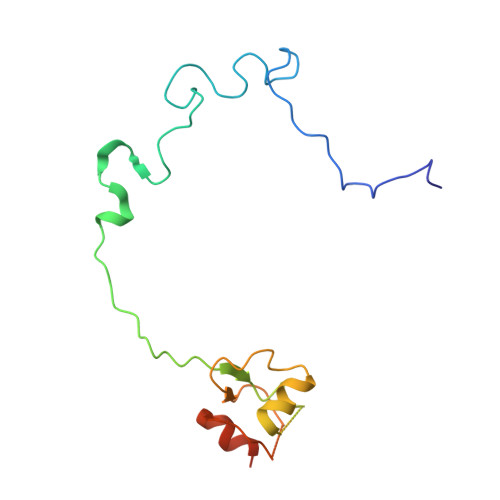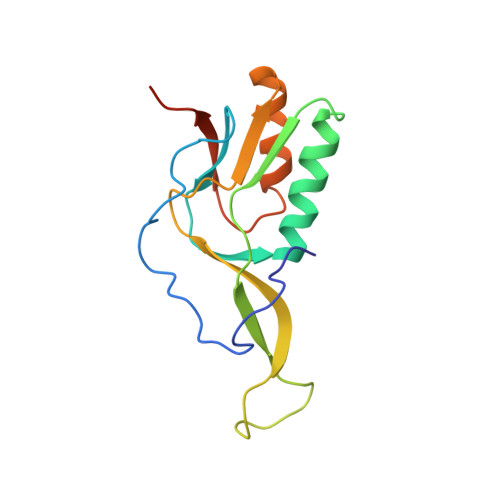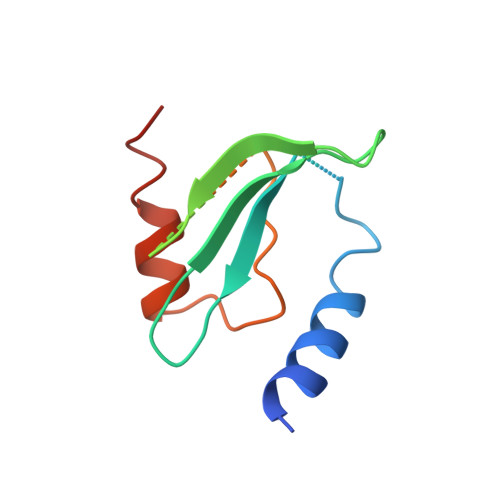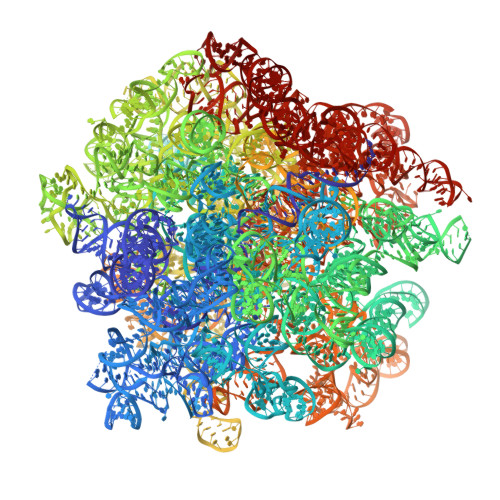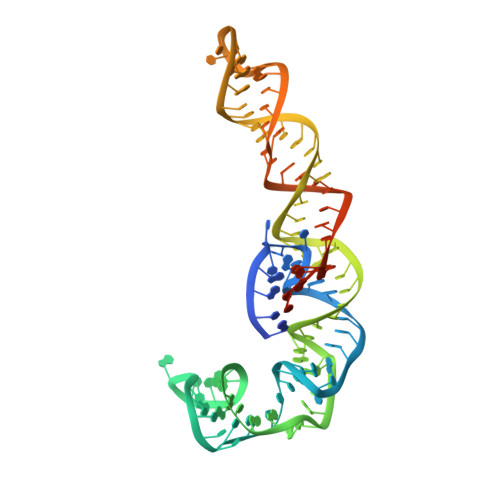cryoEM-Guided Development of Antibiotics for Drug-Resistant Bacteria.
Belousoff, M.J., Venugopal, H., Wright, A., Seoner, S., Stuart, I., Stubenrauch, C., Bamert, R.S., Lupton, D.W., Lithgow, T.(2019) ChemMedChem 14: 527-531
- PubMed: 30667174
- DOI: https://doi.org/10.1002/cmdc.201900042
- Primary Citation of Related Structures:
6DDD, 6DDG - PubMed Abstract:
While the ribosome is a common target for antibiotics, challenges with crystallography can impede the development of new bioactives using structure-based drug design approaches. In this study we exploit common structural features present in linezolid-resistant forms of both methicillin-resistant Staphylococcus aureus (MRSA) and vancomycin-resistant Enterococcus (VRE) to redesign the antibiotic. Enabled by rapid and facile cryoEM structures, this process has identified (S)-2,2-dichloro-N-((3-(3-fluoro-4-morpholinophenyl)-2-oxooxazolidin-5-yl)methyl)acetamide (LZD-5) and (S)-2-chloro-N-((3-(3-fluoro-4-morpholinophenyl)-2-oxooxazolidin-5-yl)methyl) acetamide (LZD-6), which inhibit the ribosomal function and growth of linezolid-resistant MRSA and VRE. The strategy discussed highlights the potential for cryoEM to facilitate the development of novel bioactive materials.
Organizational Affiliation:
Infection and Immunity Program, Department of Microbiology, Monash University, Clayton, 3800, Australia.








